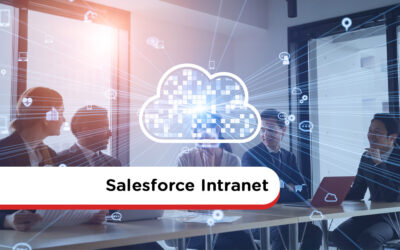Intranet Design Services
Choose from the self-build option with our support or work with one of our designers who will create a customized, fully-functioning intranet for your business, in 40 days or less, guaranteed!
The Challenge: Lack Of Time
You’ve defined your requirements and you know MyHub can deliver the outcomes you’re looking for. But do you lack the time and resources to customize your MyHub intranet site and get it launched on time?
The Solution: We Do It For You
By engaging with one of our designers, we’ll remove all of the complexity and risk by doing it all for you.
Planning For Success
Your MyHub intranet designer will lead the engagement process and ensure you’re updated on progress. The process is broken down into three key stages including:

Scope & Commercials
- Gathering requirements
- Defining launch objectives and timelines
- Developing a site plan including key pages, modules and content
- Agreeing the scope of works, pricing and terms.

Site Design
- Adding a company logo and changing site color options
- Designing and adding pages
- Adding content to pages including images, news articles, text, video and forms
- Adding folders and files to the Document Exchange
- Adding users to the site, Role Groups and Roles

Launch
- Handover and training
- Post-launch support
- Free site audit at any time
MyHub Designers, Delivering Great Outcomes
Intranet Design Articles
How to Save Paper: 12 Easy Tips for Efficiency and Sustainability
In today’s digital age, reducing paper usage is not only an eco-friendly choice but also a smart business strategy. The blog post from MyHub Intranet outlines 12 practical tips to help organizations minimize paper waste, cut costs, and improve operational efficiency. These strategies include transitioning to digital approval forms, implementing electronic document storage, and adopting cloud-based collaboration tools.
The article emphasizes the importance of rethinking traditional paper-based processes. By embracing digital solutions, businesses can streamline workflows, reduce the risk of errors, and enhance data security. The shift towards paperless operations also aligns with growing consumer expectations for environmental responsibility, making it a crucial step for companies aiming to build a sustainable brand image.
Moreover, the blog highlights the financial benefits of reducing paper consumption. Organizations can save on printing costs, reduce the need for physical storage space, and lower maintenance expenses associated with paper-based systems. Overall, the post provides a comprehensive guide for businesses looking to adopt more sustainable and efficient practices.
Employee Suggestion Program: How To Find The Gold
The blog post emphasizes the untapped potential within employee suggestions, citing examples like Amazon Prime and the Facebook ‘Like’ button, which originated from staff ideas. Employees, being on the front lines, possess unique insights that can lead to significant innovations and improvements. Encouraging a culture where these ideas are welcomed can be a game-changer for businesses.
Implementing a digital employee suggestion program via an intranet simplifies the process of capturing and evaluating ideas. Best practices include creating easy-to-use submission forms, allowing multimedia attachments, and categorizing suggestions to align with business goals. Automated workflows ensure that ideas are directed to the appropriate personnel, and contributors receive timely feedback, fostering transparency and trust.
Beyond the suggestion box, the article explores additional avenues like employee forums, focus groups, pulse surveys, and instant messaging channels to gather feedback. The key takeaway is to create an environment where all ideas are valued, provide clear guidelines, and ensure consistent communication about the outcomes of suggestions. By doing so, organizations can cultivate a continuous improvement culture that leverages employee creativity.
How To Deliver Bad News To Employees
Delivering bad news to employees is one of the most challenging tasks managers face, especially during times of economic uncertainty. The blog post emphasizes the importance of preparation, suggesting that managers anticipate potential questions and have clear, honest answers ready. Choosing the right time and setting for the conversation is crucial to ensure the message is received with the intended sensitivity.
The article advises against sugar-coating the message. Instead, managers should be direct and transparent, providing a clear explanation of the reasons behind the decision. It’s essential to allow employees space to process the information, express their emotions, and ask questions. Demonstrating empathy and understanding during this process can help maintain trust and respect.
Furthermore, the blog highlights the importance of supporting the remaining team members after delivering bad news. Open communication channels, such as discussion forums or surveys, can help gauge employee sentiment and address concerns promptly. By handling difficult conversations with care and transparency, managers can navigate challenging situations while preserving team cohesion and morale.
Salesforce Intranet: Save Money With A Winning Combination
Integrating Salesforce with your company’s intranet offers a powerful solution to enhance internal communication and collaboration. By centralizing access to Salesforce data within the intranet, employees can seamlessly retrieve customer information, track sales activities, and manage tasks without switching between platforms. This integration not only improves efficiency but also ensures that teams are aligned and informed.
The blog post delves into the cost-saving benefits of this integration. By reducing the need for multiple software licenses and minimizing training requirements, organizations can allocate resources more effectively. Additionally, the streamlined workflows lead to faster decision-making and improved customer service, further contributing to the bottom line.
MyHub Intranet provides practical guidance on implementing this integration, highlighting best practices and potential challenges. With the right approach, businesses can leverage the combined power of Salesforce and their intranet to drive productivity and achieve strategic goals.
Intranet Roadmap: How To Get Started On Your Intranet Project
Implementing a new intranet can be a daunting task, but with a well-structured roadmap, the process becomes manageable and efficient. An intranet roadmap serves as a strategic plan that outlines the vision, objectives, and key milestones of the project. It ensures all stakeholders are aligned and provides clarity on the steps needed for successful implementation.
The roadmap typically includes elements such as the overall vision, important milestones, specific workstreams like intranet design and content generation, a timeline for implementation, and success measures. It also emphasizes the importance of involving various departments, such as marketing and HR, to contribute to content creation and employee training. By breaking down the project into manageable pieces, the roadmap facilitates better internal communication and collaboration.
MyHub Intranet Solutions
MyHub’s guide provides practical insights into creating an intranet roadmap, including tips on setting clear objectives, involving a steering group, and identifying a project owner. It also discusses the benefits of cloud-based intranet solutions, which are easy to set up, cost-effective, and require minimal technical knowledge. With a well-planned roadmap, organizations can ensure a smooth intranet implementation that meets their specific needs.
Personal Project Management Made Easy
Effective personal project management goes beyond simple to-do lists and sticky notes. It requires a combination of organizational skills, clear communication, and the appropriate tools to ensure tasks are completed efficiently and goals are met. Whether managing work-related projects or personal endeavors, having a structured approach is key to success.
The blog explores various project management methodologies suitable for personal use, including Waterfall, Lean, Scrum, Kanban, and PMI’s PMBOK framework. Each method offers unique advantages: Waterfall provides a linear approach; Lean focuses on efficiency; Scrum emphasizes iterative progress; Kanban offers visual workflow management; and PMBOK delivers a comprehensive set of best practices. Understanding these methodologies allows individuals to choose the one that best fits their project needs.
Incorporating the right software tools can further enhance personal project management. Features such as task tracking, collaboration platforms, and real-time updates help maintain visibility and accountability. By combining effective methodologies with supportive tools, individuals can manage their projects more effectively, leading to successful outcomes.







